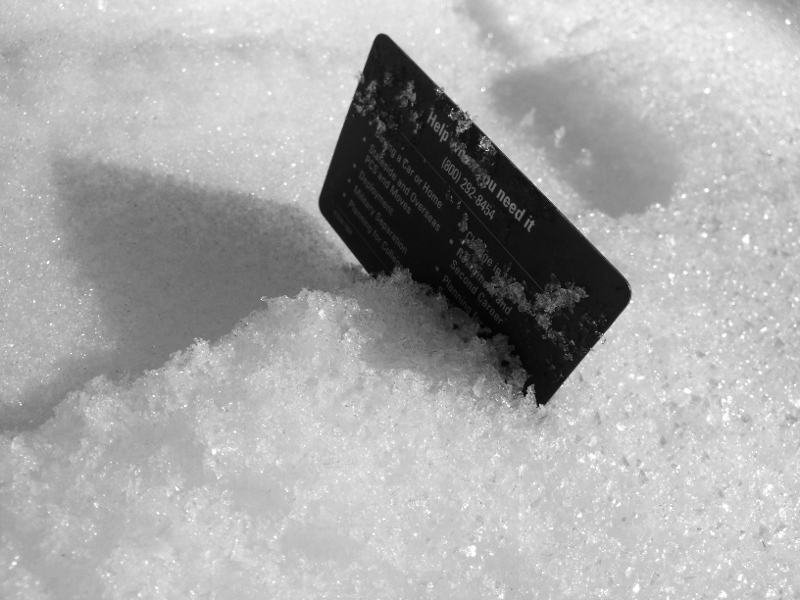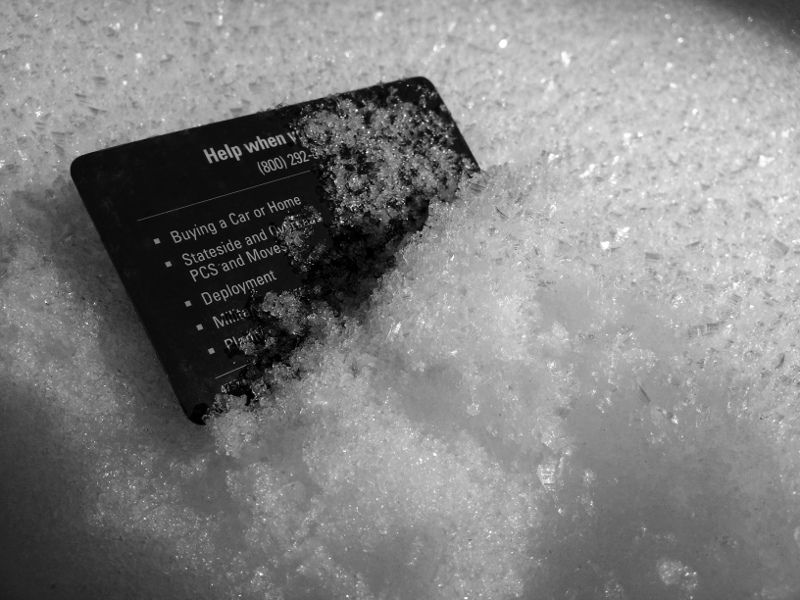November 28, 2013, Pre-feast walk up Denny Creek
11/28/13
5457
13
Susan wanted to pregame dinner with a hike, and Denny Creek was the place. The upper bridge (going E-->W as you ascend) is missing, probably has been for a while.
Snow: Sun-affected and crusty/bomber almost anywhere that the sun could have done its work. In the sheltered and very shady, ~1-2 cm of ~2 mm facets sit atop the crust. No surface hoar down low, but we found it in the shade at 3700'. A quick pit to the ground at 3700 (~14" deep) showed mostly pencil-hard compact snow. No facets at the ground, and one reliably hard Q2.5 shear 4-6" down in 1F snow.
Nothing that we saw anywhere near the pass looked like fun to ski.
Snow: Sun-affected and crusty/bomber almost anywhere that the sun could have done its work. In the sheltered and very shady, ~1-2 cm of ~2 mm facets sit atop the crust. No surface hoar down low, but we found it in the shade at 3700'. A quick pit to the ground at 3700 (~14" deep) showed mostly pencil-hard compact snow. No facets at the ground, and one reliably hard Q2.5 shear 4-6" down in 1F snow.
Nothing that we saw anywhere near the pass looked like fun to ski.


Facets or surface hoar? Have not studied/reviewed formerly for years--thought facets could only be IN the snow-pack...surface hoar formed on the surface even when buried...all ears..
appreciate the education.
appreciate the education.
It's my understanding that faceting takes place anywhere there's a temperature / humidity gradient across snow. I don't believe that the faceting process is limited only to crystals within the snowpack. If I'm in error, I'd love to learn more.
Observationally, this top half inch of snow ran like sugar through my fingers, was composed of angular/faceted crystal types of fairly uniform grain size, and did not have any of the plates I generally associate with surface hoar.
The photos posted were from the one location where we found developed surface hoar sitting atop this faceted snow.
Observationally, this top half inch of snow ran like sugar through my fingers, was composed of angular/faceted crystal types of fairly uniform grain size, and did not have any of the plates I generally associate with surface hoar.
The photos posted were from the one location where we found developed surface hoar sitting atop this faceted snow.
Thanks so much--I'm from an early '80's "snow science" back ground (nope, not even close to being a scientist..) where we used TG and two other metamorphisms ( "constructive" and "destructive" are terms I rarely here anymore..) as part of the lexicon. Looks like I'd better get current with the times...
Once again thanks for the clarification.
Once again thanks for the clarification.
Surface hoar=frozen fog, facets=recrystallized snow.
Surface hoar forms with clear skies, so not frozen fog. Radiational cooling of the snow on clear nights combined with warmer moist air causes surface hoar formation.
Frozen fog is rime.
What the op found is likely near surface faceting, overlain in areas with surface hoar.
Frozen fog is rime.
What the op found is likely near surface faceting, overlain in areas with surface hoar.
Excellent input here, thanks!
Depth hoar= facets that have grown large overtime do to temper gradient metamorphism over a long time verses short time so large spaces between crystals making collapsing from a load more likely relatively speaking?
Depth hoar= facets that have grown large overtime do to temper gradient metamorphism over a long time verses short time so large spaces between crystals making collapsing from a load more likely relatively speaking?
I always that surface hoar formed on the surface when there were cold clear nights rather than warm ones. Correct me if you think I'm in error please. Here to listen and learn...
Another thing: my thinking about how I've thought of how surface hoar forms now seems to me to suggest those conditions of cold clear nights would be more conducive to faceting ( potential for big temperature gradient?). More information please...
Still, other than this academic (which is cool!!) exercise and not being a scientist, I still try to keep it "simple." If I determine that there is a weakness, or loading (from all sorts of indicators), that concerns me, then route selection to mitigate me getting harmed but still getting me to the most amount of freshies is how I try to end my ski days--of course there are those rare days I just call it a day and go home because it just seems too risky.
Another thing: my thinking about how I've thought of how surface hoar forms now seems to me to suggest those conditions of cold clear nights would be more conducive to faceting ( potential for big temperature gradient?). More information please...
Still, other than this academic (which is cool!!) exercise and not being a scientist, I still try to keep it "simple." If I determine that there is a weakness, or loading (from all sorts of indicators), that concerns me, then route selection to mitigate me getting harmed but still getting me to the most amount of freshies is how I try to end my ski days--of course there are those rare days I just call it a day and go home because it just seems too risky.
Clear nights usually mean colder temps, when I said warmer moist air I meant relative the snow surface.
Yes clear and cold nights are conducive to faceting, but it doesn't have to be that cold. Where I ski most of the time, east of Blewett, it is often clear and cold but not bitterly so and the early season snowpack that is shallow can consist almost entirely of facets after extended spells of fair weather.
Yes clear and cold nights are conducive to faceting, but it doesn't have to be that cold. Where I ski most of the time, east of Blewett, it is often clear and cold but not bitterly so and the early season snowpack that is shallow can consist almost entirely of facets after extended spells of fair weather.
author=aaron_wright link=topic=29789.msg124981#msg124981 date=1385751417]
Surface hoar forms with clear skies, so not frozen fog. Radiational cooling of the snow on clear nights combined with warmer moist air causes surface hoar formation.
Frozen fog is rime.
You are right, although the same conditions conducive for fog formation are conducive for hoar formation: clear skies, lack of wind, high humidity. The places that I've found rime (at least deposited on trees or structures) have been in windy, exposed ridges, which are not places that typically hold fog.
author=Staying Alive in Avalanche Terrain, p. 138]
Surface hoar is just a fancy name for frost. It doesn't fall from the sky, it grows on the snow on clear, calm and humid nights...it is simply the winter equivalent of dew.
Rime is formed on ridge tops when clouds(fog) move over them and water collects on surfaces and freezes.
And as I "recall".... rime is what happens to a crystal under certain conditions before it lands on something...? When I see rimed crystals falling and wind transport taking place, I think that I should be considering windslab formation to possibly be more dangerous do to that riming of the crystal...Am I on the right track there? Seems like graupel and/or needles does seem to be more present when wind slabs seem to be more disconcerting...
author=rlsg link=topic=29789.msg124994#msg124994 date=1385760967]
And as I "recall".... rime is what happens to a crystal under certain conditions before it lands on something...? When I see rimed crystals falling and wind transport taking place, I think that I should be considering windslab formation to possibly be more dangerous do to that riming of the crystal...Am I on the right track there? Seems like graupel and/or needles does seem to be more present when wind slabs seem to be more disconcerting...
Graupel are rimed snow crystals and don't have much if any cohesion, slabs formed over pooled graupel are a concern.
This is great information--thanks again Charlie for snow site information (which was what the thread originally was--).
Reply to this TR
Please login first:
